Newsroom
What is a 2.5 Inch Thin-Wall Ball Bearing?
Ball bearings are fundamental components in modern machinery, enabling smooth rotational motion while reducing friction and supporting loads. Among the diverse types of bearings, the 2.5-inch thin-wall ball bearing stands out for its specialized design and unique applications. This article explores the structure, materials, advantages, and industrial uses of this compact yet robust component, shedding light on why it has become indispensable in fields like robotics, aerospace, and medical technology.
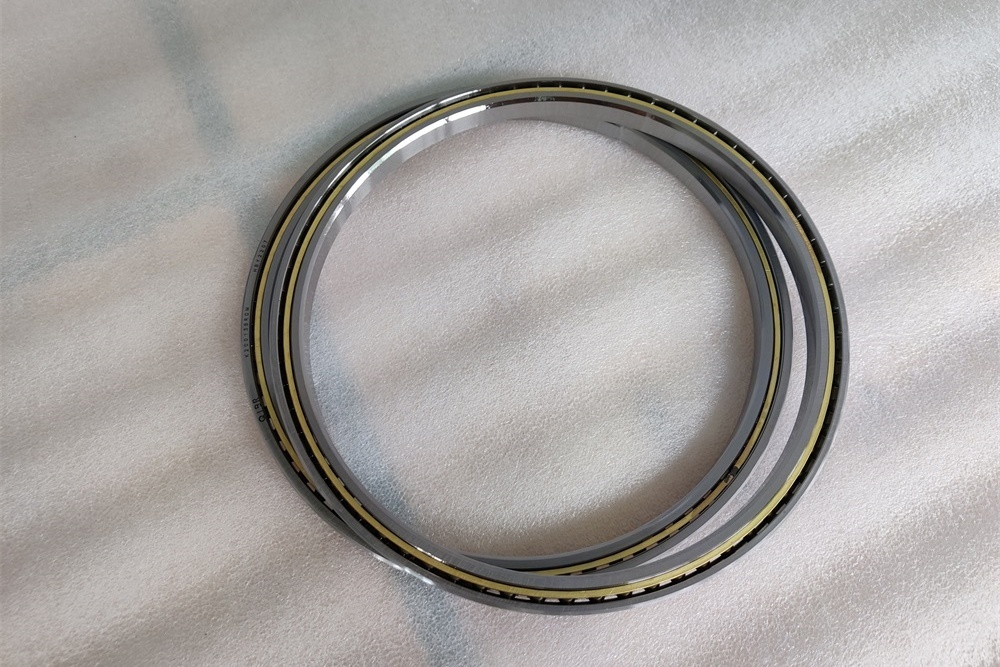
1. Defining the 2.5-Inch Thin-Wall Ball Bearing
A 2.5-inch thin-wall ball bearing refers to a bearing with an inner diameter (ID) of 2.5 inches (63.5 mm) and a uniquely slim cross-sectional profile. The term "thin-wall" indicates that the outer ring and inner ring are designed with minimal radial thickness compared to standard bearings. This lightweight construction allows the bearing to occupy less space while maintaining high load capacity and precision.
Key Specifications:
Inner Diameter (ID): 2.5 inches (63.5 mm)
Outer Diameter (OD): Typically follows a standardized thin-wall ratio (e.g., OD ≈ 1.2–1.5 times ID).
Width: Narrower than conventional bearings, optimized for compact assemblies.
Material: Often made from high-grade steel, stainless steel, or hybrid ceramics.
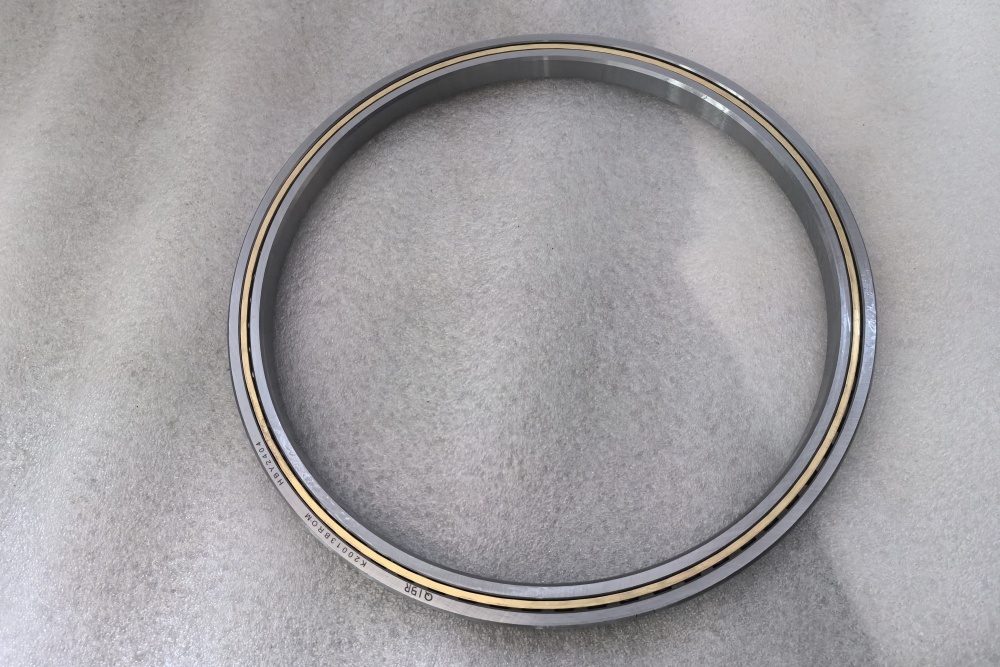
2. Anatomy of a Thin-Wall Ball Bearing
A thin-wall ball bearing shares core components with standard ball bearings but with critical design tweaks:
Inner and Outer Rings:
These races are precision-machined to minimize material while ensuring structural integrity. The reduced wall thickness lowers weight but requires advanced engineering to handle stress.
Balls:
High-precision spheres (usually steel or ceramic) distribute loads evenly. Thin-wall bearings may use fewer or smaller balls to fit the slimmer profile.
Cage:
A retainer (often polymer or brass) separates the balls, preventing friction. In thin-wall designs, cage geometry is optimized for space constraints.
Seals/Shields:
Optional protective layers guard against contaminants like dust or moisture, crucial in harsh environments.
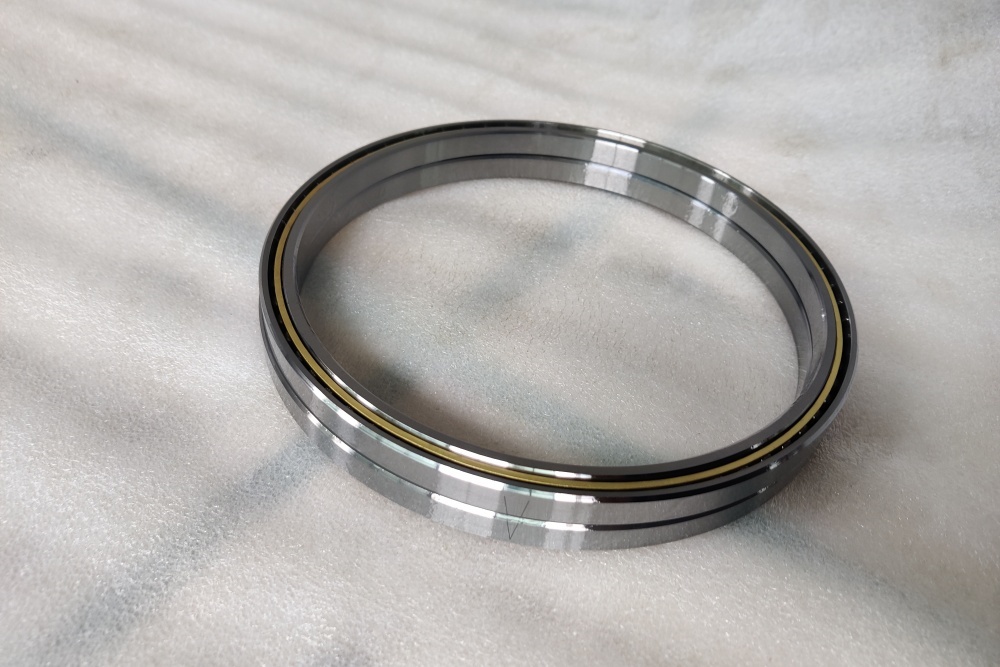
3. Why "Thin-Wall"? Design Advantages
The thin-wall design addresses specific engineering challenges:
Space Efficiency:
Ideal for applications where radial space is limited, such as robotic arms or drone motors. A 2.5-inch thin-wall bearing may have an OD of just 3 inches, saving 20–30% space compared to standard bearings.
Weight Reduction:
Critical in aerospace and automotive industries, where every gram impacts fuel efficiency or payload capacity.
High Precision:
Thin-wall bearings are manufactured to tight tolerances (ABEC 5 or higher), ensuring smooth operation in sensitive instruments.
Versatility:
Compatible with complex mounting configurations, including cantilevered shafts or multi-axis systems.
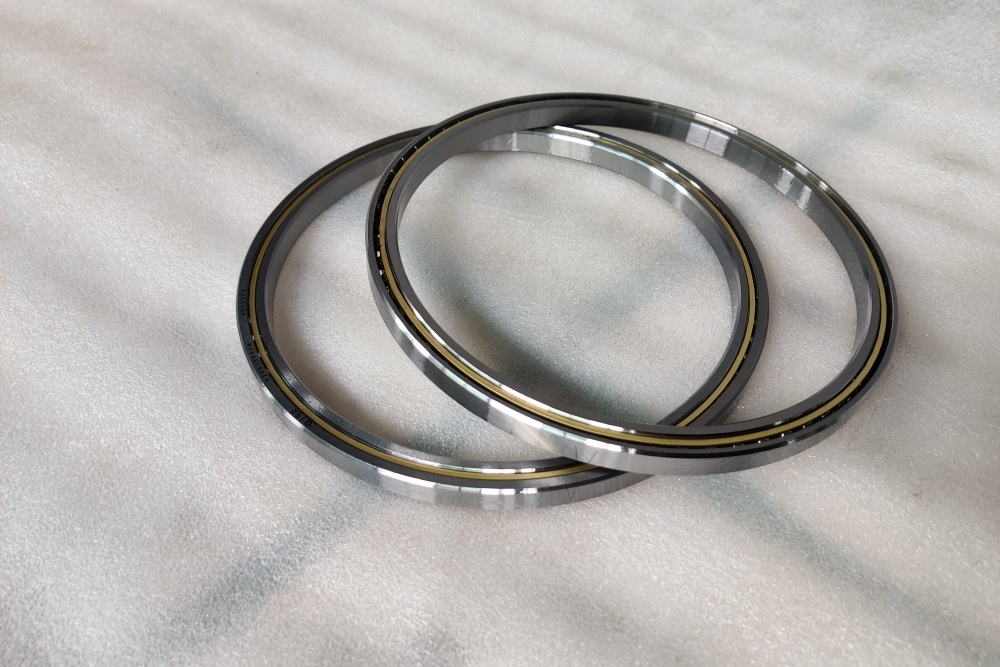
4. Material Innovations
Material selection is pivotal for balancing strength, weight, and corrosion resistance:
Chromium Steel (AISI 52100):
The most common choice, offering excellent hardness and fatigue resistance. Suitable for general industrial use.
Stainless Steel (AISI 440C):
Provides superior corrosion resistance for medical or marine environments. Slightly less load capacity than chromium steel.
Hybrid Ceramic Bearings:
Silicon nitride (Si3N4) balls paired with steel races reduce weight and friction, ideal for high-speed applications like dental drills or turbochargers.
Polymer Composites:
Lightweight and corrosion-proof, these are used in food processing or chemical industries.
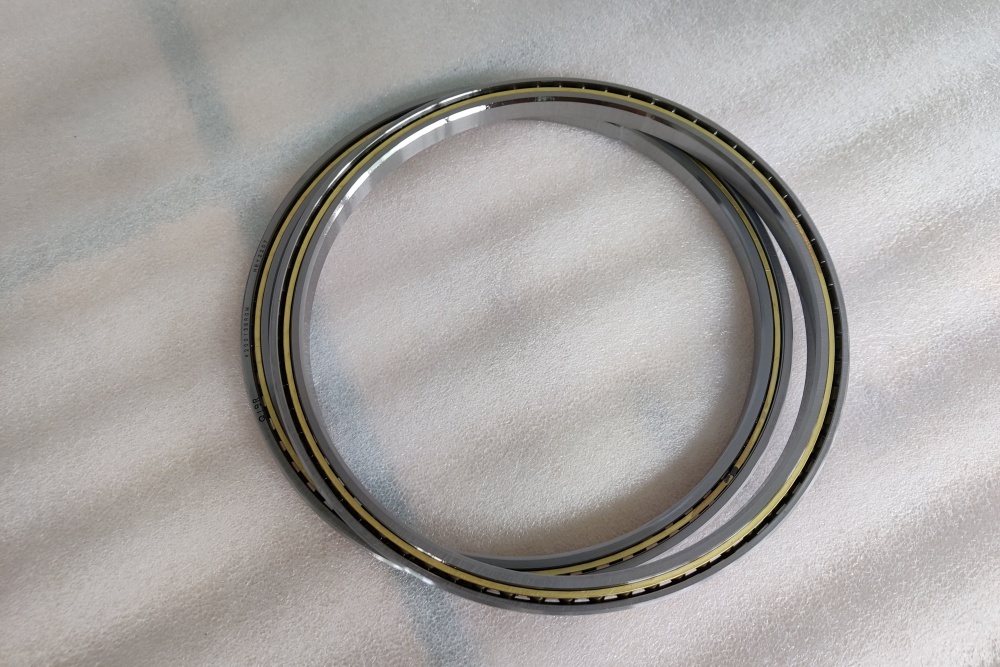
5. Manufacturing Process: Precision Matters
Producing a 2.5-inch thin-wall bearing involves meticulous steps:
Material Forging:
Raw steel is forged into rings and heat-treated for hardness.
Grinding and Lapping:
Surfaces are ground to micron-level smoothness to minimize friction.
Cage Assembly:
Balls are inserted with a cage, often using automated systems for precision.
Quality Testing:
Each bearing undergoes rigorous checks for noise, vibration, and load capacity.
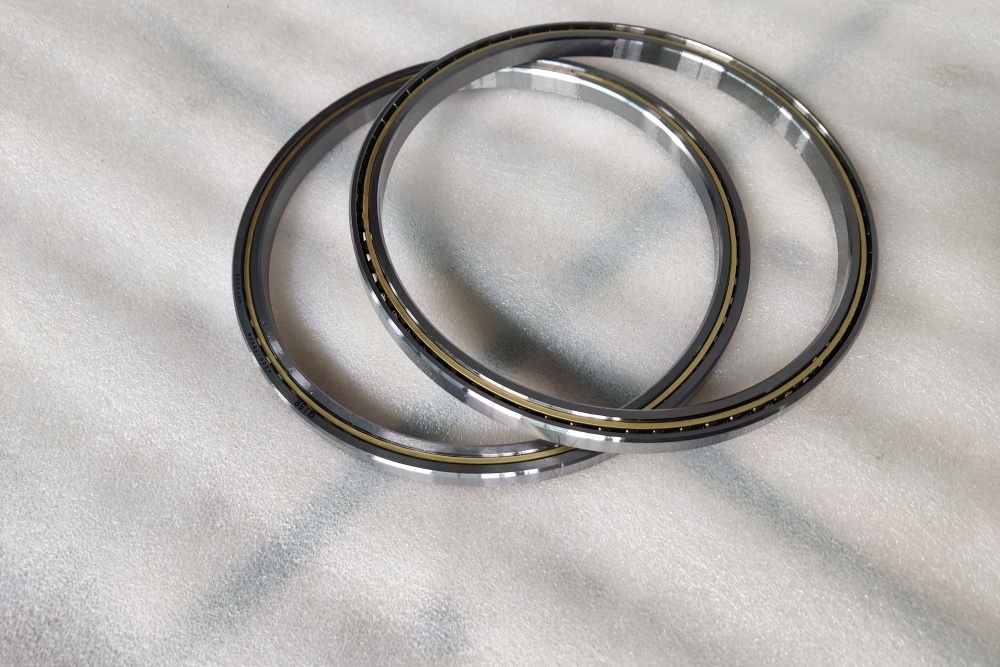
6. Industrial Applications
The 2.5-inch thin-wall ball bearing thrives in sectors demanding compactness and reliability:
Robotics:
Used in articulated joints of industrial robots (e.g., welding arms, CNC machines), where space constraints and precise motion are critical.
Aerospace:
Satellite solar array drives and helicopter rotor systems rely on thin-wall bearings to reduce weight without compromising performance.
Medical Devices:
MRI scanners, surgical robots, and prosthetic limbs utilize these bearings for silent, contamination-free operation.
Automotive:
Electric vehicle (EV) motors and steering systems benefit from their lightweight design.
Consumer Electronics:
High-end cameras and 3D printers use miniature thin-wall bearings for precise component movement.
7. Selecting the Right Bearing: Key Considerations
When choosing a 2.5-inch thin-wall ball bearing, engineers evaluate:
Load Capacity:
Radial and axial loads must align with the bearing’s dynamic (C) and static (C0) ratings.
Speed Limits:
Excessive RPMs can cause overheating; hybrid ceramics excel in high-speed scenarios.
Environmental Factors:
Corrosive or extreme-temperature environments demand stainless steel or specialty coatings.
Cost:
Ceramic and stainless steel bearings are pricier but offer long-term savings in maintenance.
8. Maintenance and Lifespan
Thin-wall bearings require careful handling:
Lubrication:
Use high-temperature grease or dry lubricants in sealed units.
Installation:
Avoid misalignment during mounting, which can cause premature wear.
Contamination Control:
Shield bearings from particulates using seals or environmental enclosures.
With proper care, these bearings can last thousands of operating hours.
9. Future TrendsAdvancements in materials science and additive manufacturing are shaping the next generation of thin-wall bearings:
Advancements in materials science and additive manufacturing are shaping the next generation of thin-wall bearings:
3D-Printed Bearings:
Custom geometries for niche applications, such as lattice-structured cages for weight reduction.
Smart Bearings:
Embedded sensors to monitor temperature, vibration, and wear in real time.
Eco-Friendly Designs:
Recyclable polymers and biodegradable lubricants align with sustainability goals.
10. Conclusion
The 2.5-inch thin-wall ball bearing exemplifies how engineering innovation can solve complex spatial and performance challenges. By marrying compact design with robust materials, this component has become a cornerstone of modern technology—from life-saving medical tools to cutting-edge robotics. As industries continue to prioritize efficiency and miniaturization, the demand for thin-wall bearings will only grow, driving further advancements in this critical field. Engineers and designers who master its nuances will unlock new possibilities in machinery and beyond.


